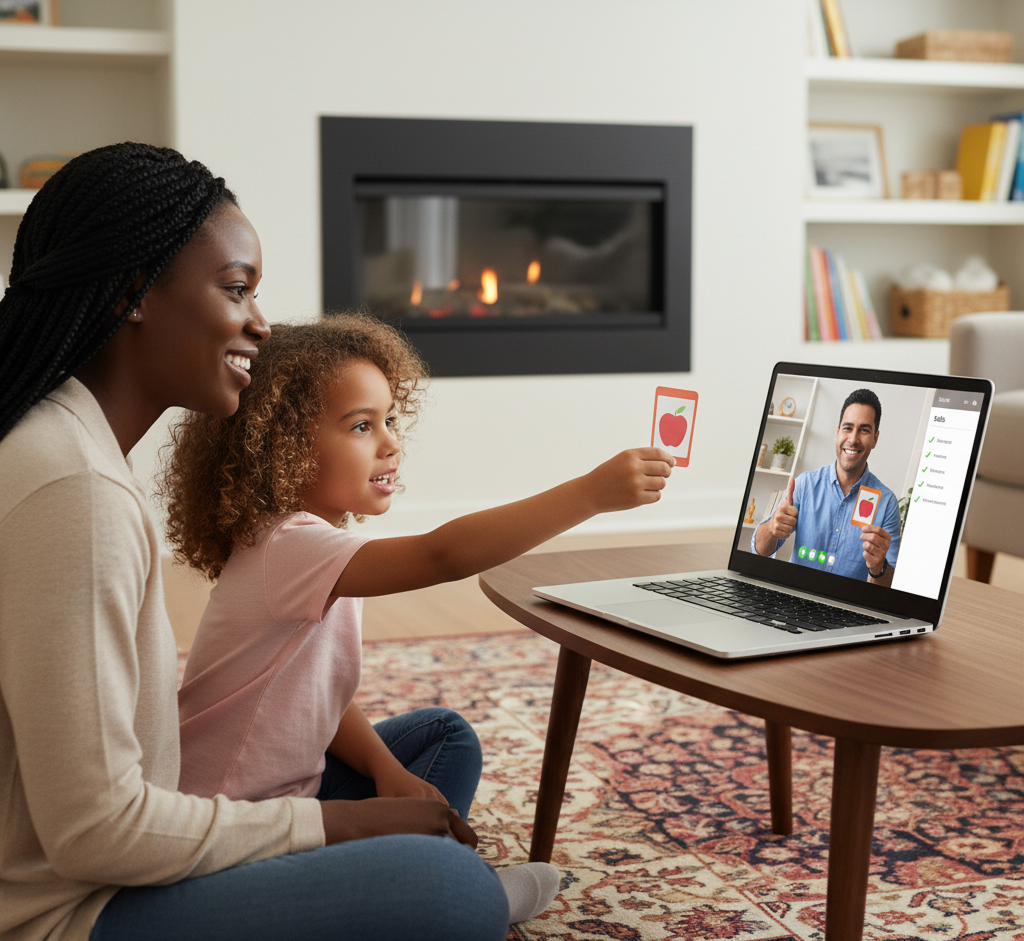5 Things You Didn't Realize About Virtual ABA

1. Virtual ABA Isn't Just "Screen Time"
When you hear "virtual therapy," you might picture your child passively watching a screen for hours. That's not how it works.
Virtual ABA is active, therapeutic engagement with a live clinician. Your child isn't watching videos or playing random games. They're participating in structured, evidence-based learning activities guided by a Board Certified Behavior Analyst (BCBA) and Registered Behavior Technician (RBT).
Think of it like a live video call with a specialist who's coaching your child through communication skills, play activities, and managing challenging behaviors. Many sessions involve you working hands-on with your child while the therapist guides you both in real-time.
2. You Can Get Started in Weeks, Not Years
The national average waitlist for traditional ABA clinics ranges from 6 to 18 months. Some families wait even longer. That's precious time when early intervention matters most.
Virtual ABA providers can often start therapy within 90 days of your initial inquiry. No waitlist. No endless delays. Just a straightforward path from assessment to starting sessions.
For families who've been told to "just wait," this timeline can feel almost too good to be true, but it's very real.
3. Research Shows It's Just as Effective as In-Person Therapy
This is the number one concern parents have, and it's completely understandable. But the science is clear.
Multiple peer-reviewed studies confirm that telehealth ABA produces similar improvements in communication, social skills, and behavior reduction as traditional in-person therapy. A 2021 meta-analysis found a 90% reduction in challenging behaviors through telehealth, matching in-person results.
Why? Because your child is learning skills in their natural environment (your home) where they'll actually use them. Research published in the Journal of Autism and Developmental Disorders showed equivalent gains in social and communication skills for children receiving Virtual ABA.
4. Skills Learned at Home Transfer Better to Daily Life
Here's something that surprises many parents: therapy delivered in home settings often promotes better skill generalization.
When children learn communication strategies or daily living skills in a clinic, they still need to transfer those skills to home, school, and community settings. With Virtual ABA, your child is already learning in the environment where they'll use these skills most: during meals, playtime, and daily routines.
This means the gap between "learning the skill" and "using the skill independently" is much smaller.
5. You Become Your Child's Most Powerful Advocate
Virtual ABA models emphasize high parent involvement. You're not dropping your child off and hoping for the best. You're an active participant in every session.
Your therapist coaches you on how to prompt communication, reinforce positive behaviors, and respond to challenges. This means you're gaining confidence and skills to support your child 24/7, not just when the therapist is on the clock.
Many parents report feeling more empowered and knowledgeable about their child's development than they ever did with traditional "behind closed doors" therapy models.
--
Ready to learn more? Virtual ABA therapy eliminates waitlists and geographic barriers while delivering the same quality outcomes families expect. If you're struggling to access traditional services, it might be time to explore this option. Apply Today

